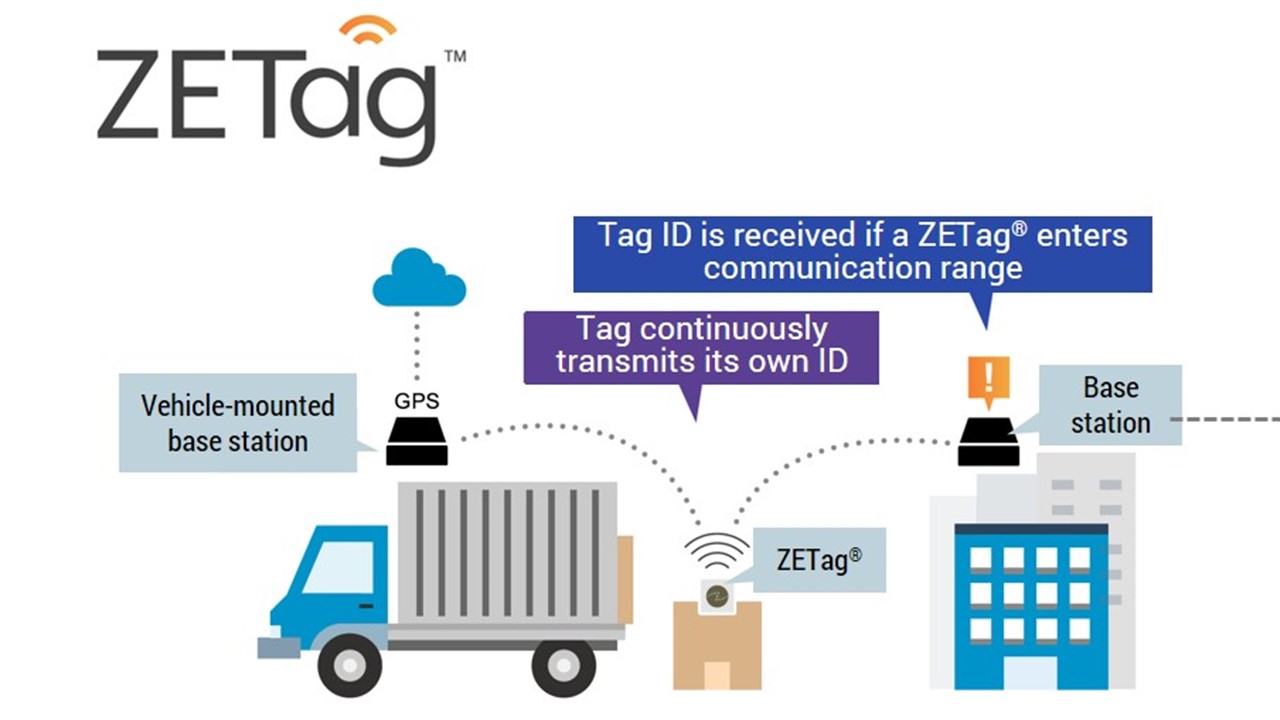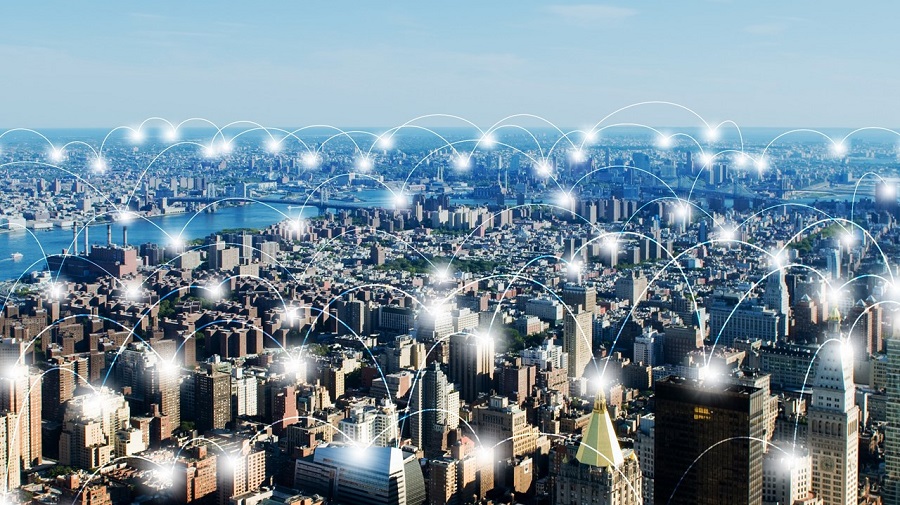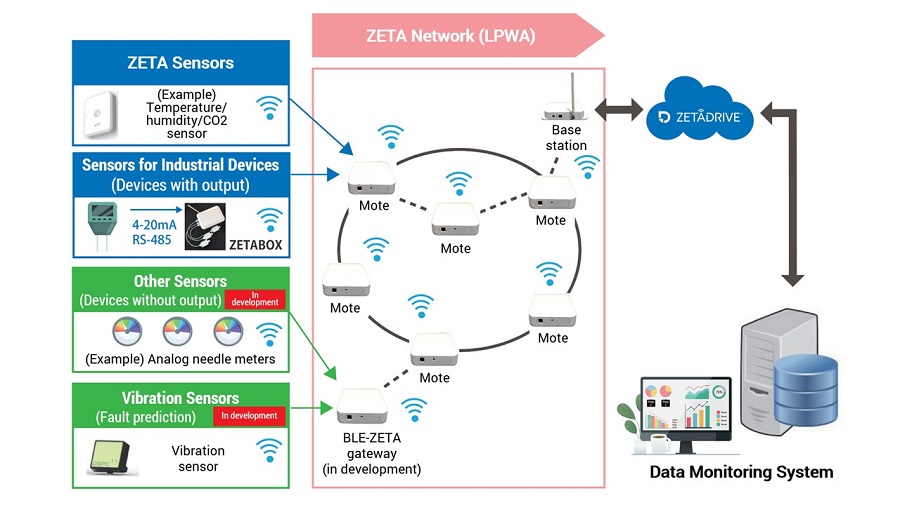
© TOPPAN INC.
Tokyo – October 26, 2021 –Toppan (TYO: 7911), a global leader in communication, security, packaging, décor materials, and electronics solutions, has established a system at a number of its manufacturing plants to enable automated collection of environmental data such as effluent water level and hydrogen ion concentration. The system takes advantage of ZETA,1 which Toppan is driving expanded use of as a next-generation Low Power Wide Area (LPWA) network protocol. It will be displayed in the Toppan corner (45-2, halls 7 and 8) of the ZETA Alliance booth at 5G/IoT Network Expo, which will be held from October 27 to 29 at the Makuhari Messe convention center in Chiba, Japan.
With developments such as the establishment of the Sustainable Development Goals (SDGs), efforts to tackle climate change and other global environmental issues are now considered essential for the survival of businesses. Environmental conservation work at manufacturing sites is a corporate social responsibility. It can be difficult, however, to secure the human resources that many environmental data collection processes rely on, and there is a pressing need to introduce the Internet of Things (IoT) at plants.
It has been difficult to take advantage of the IoT using conventional network technologies at Toppan’s plants thus far because sensors for measuring environmental data are often installed in locations indoors or underground with poor signal reception or in outdoor areas with limited access to power sources. Toppan has therefore taken advantage of ZETA’s excellent connectivity to create blind-spot-free wireless networks inside plants, linking sensors installed in various locations to establish a system for automated data collection. Sensors for approximately 10% of the more than 1,000 items that require inspection at the plants are connected to the ZETA network.
The plants in which the system is installed have started to automate collection of information such as effluent water level and pH (hydrogen ion concentration) as well as oxidation-reduction potential (ORP), and Toppan intends to automate collection of all environmental data at the plants during fiscal 2022. It is estimated that introducing the system will make it possible to reduce the workload for environmental conservation activities at the plants by approximately 20%. This will facilitate allocation of human resources to active environmental conservation efforts and help strengthen overall risk management.
The system consists of a ZETA network covering the entire plant, sensor devices that connect to network, the ZETADRIVE® cloud-based platform for storing measured data, and a data monitoring system. Toppan has also developed ZETABOX™, a new device for digitization and ZETA-format transmission of data from multiple measurement instruments already operating inside the plants.
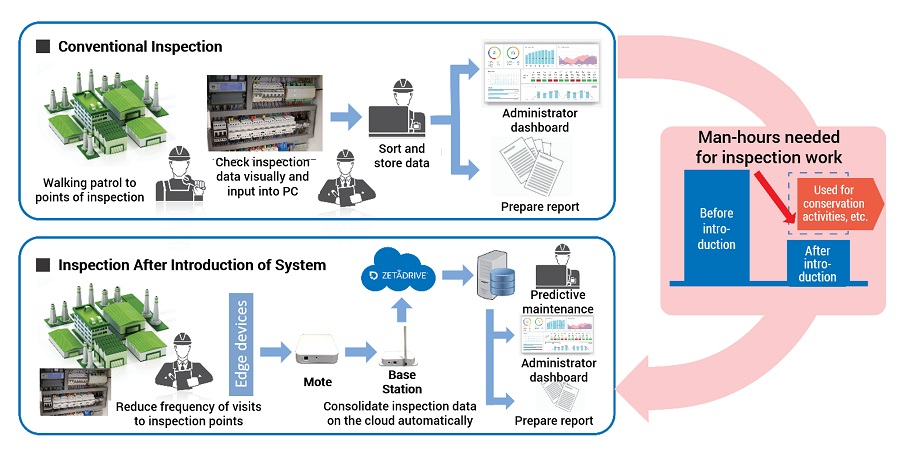
© TOPPAN INC.
The challenge of creating a blind-spot-free wireless network has been overcome by optimal positioning of battery-operated motes (intermediate nodes). The ZETABOX data converter, meanwhile, makes it possible to digitize data from existing measurement instruments and receive it over the ZETA network. Using ZETABOX lowers initial costs for introducing the system and eliminates the need to change processes such as measurement instrument maintenance.
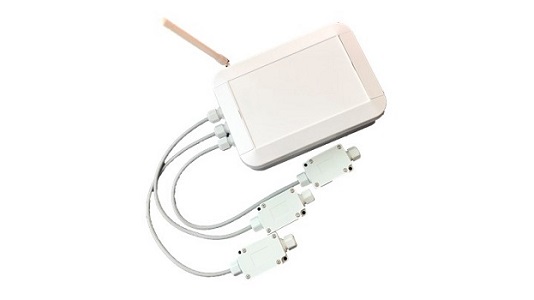
© TOPPAN INC.
| Product name | ZETABOX™ |
| Supported interfaces | 4-20mA or RS-485(3ch); contact switch (1ch) |
| Power source | Battery-operated |
| Battery life | 4-20mA: 12 years; RS-485: 8 years *In case of one transmission every 30 minutes *Values calculated for ZETA-P protocol |
| Waterproofing level | IP65 *Waterproof coating applied to substrate to counteract condensation |
| Size | 210×150×55mm |
The cloud-based ZETADRIVE platform handles management of the data collected by multiple sensors inside plants. An application programming interface (API) for obtaining data and controlling devices is also available, and linkup with systems and applications can be facilitated to meet the needs of individual plants.
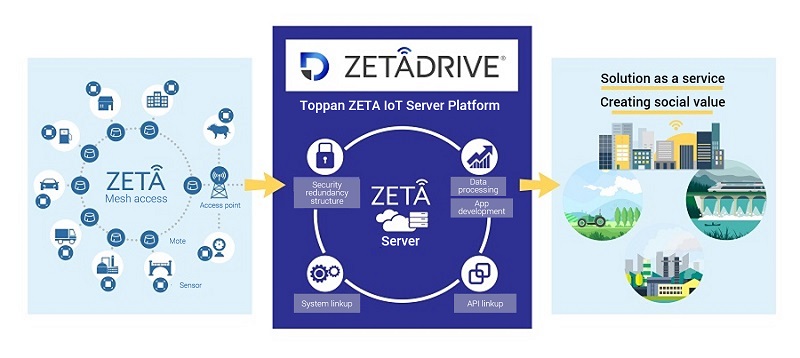
© TOPPAN INC.
“We are currently looking to introduce the system at 10 Toppan Group plants in Japan and will drive expansion to other manufacturing bases in the future,” said Yoshihisa Aida, General Manager of Marketing in Toppan’s Electronics Division. “We are working on further development, including automated data collection from analog needle meters, and exploring a comprehensive solution that covers data analysis and report generation. We will also launch sales to customers who have data monitoring systems but face challenges in collecting environmental data.”
1. ZETA is the latest LPWA network protocol designed for the IoT. It was developed by ZiFiSense and features Ultra Narrow Band (UNB), distributed access with intelligent mesh topology and bi-directional communication. ZETA is receiving attention for its ability to be operated at a lower cost and with fewer base stations than other LPWA protocols due to multi-hop communication via motes.
About the 4th 5G/IoT Network Expo
Dates: October 27 to 29, 2021
Times: 10:00–18:00 (10:00–17:00 on final day)
Venue: Makuhari Messe
Organizer: RX Japan Ltd.
https://www.5g-expo.jp/en-gb.html
About Toppan
Established in Tokyo in 1900, Toppan is a leading and diversified global provider committed to delivering sustainable, integrated solutions in fields including printing, communications, security, packaging, décor materials, electronics, and digital transformation. Toppan’s global team of more than 50,000 employees offers optimal solutions enabled by industry-leading expertise and technologies to address the diverse challenges of every business sector and society and contribute to the achievement of shared sustainability goals.
For more information, visit https://www.toppan.com/en/ or follow Toppan on LinkedIn https://www.linkedin.com/company/toppan/.

